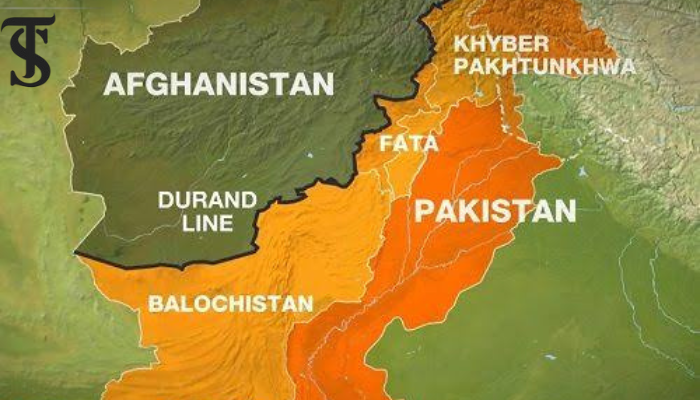Pak-China Relations in the Context of US-India Relations

- Contrasting Alliances: South Asia's geopolitics is shaped by Pak-China's economic partnership (CPEC) and US-India's military-centric QUAD collaboration, reflecting differing strategic priorities.
- Regional Stability and Rivalries: These alliances influence stability, intensify rivalries, and impact peacebuilding efforts in the region.
- Diplomacy and Multilateralism: Collaborative diplomacy, counter-terrorism efforts, and multilateral initiatives are essential for balancing tensions and fostering regional integration.
The global order is changing radically due to the transition from unipolarity to multipolarity. Emerging powers like China and India feel their presence in the geopolitical sphere, while traditional powers like the United States are readjusting their strategies to maintain their influence. Pakistan and China have cemented their alliance in the face of these changes. At the same time, the US-India alignment is part of a larger strategy to balance China’s rise in the Indo-Pacific region. This backdrop gives urgency to the analysis of how these alignments constitute the face of shaping regional stability or global power balance.
Pak-China and US-India relations are two strategic axes in the South Asian geopolitical landscape. Understanding such relationships is crucial to unraveling the complex web of alliances, rivalries, and economic interdependencies that define contemporary global politics. Their dynamics shape the contours of trade routes, security policies, and regional alignments, making this analysis integral to policymakers’ and scholars’ research.
This article will break down the intricacies of Pak-China and US-India relationships by analyzing their historical growth, major sectors of collaboration, and strategic goals. Through this, it will outline how these alliances pose challenges and opportunities in South Asia and global geopolitics. The article also makes a set of policy recommendations towards regional stability in an ever-growing competition.
Historical Context of Bilateral Relationships
The roots of Pak-China relations date back to the 1960s, based on mutual geo-political interests such as counterbalancing Indian influence, supporting each other in disputes at the regional level, etc. Gradually, that relationship transformed into an “all-weather strategic partnership,” the CPEC becoming its centre-piece. CPEC not only strengthens the infrastructure and economy of Pakistan but also marks China’s ambition to extend its Belt and Road Initiative (BRI) into South Asia, consolidating its influence in the region (Ahmed & Mustafa, 2023).
US-India relations have transformed from skepticism during the Cold War, primarily on account of India’s Soviet alignment, to a dynamic strategic partnership in the 21st century. The convergence of interests in the post-2000s era came in the form of challenging China’s rise, strengthening democratic values, and deepening economic ties. Agreements like the US-India Civil Nuclear Deal and the enhanced defense collaboration under the framework of the Indo-Pacific relationship have redefined the bilateral relationship (Mohan, 2022).
Pakistan-China and US-India alliances portray contrasting regional priorities. In China, the investment in Pakistan under CPEC represents the focus on connectivity and domination through trade. The US supports India to counterbalance China in the Indo-Pacific. This gives rise to diverging interests that have increased geopolitical competition, which is changing the nature of alliances and causing deepening regional polarization. Such a dynamic underscores the complexities of historical trust, strategic interests, and ideological differences fueling such relationships.
Contemporary Alliances and Tensions
The CPEC is the flagship project of China’s Belt and Road Initiative (BRI) and has been made a landmark of the Pak-China alliance, which denotes shared strategic objectives. CPEC further strengthens Pakistan’s connectivity and infrastructure while making it economically more dependent on China. This cooperation further indicates Beijing’s strategy to offset the influence of India over its region and acquire a pathway to the Arabian Sea. However, it also faces problems, such as security threats in Balochistan and Indian criticism, as it is regarded as an attack on the sovereignty of India because of its passing through Gilgit-Baltistan (Wolf, 2020).
The US-India partnership has transformed into a full-fledged strategic alliance with mutual interests in countering the assertiveness of China in the Indo-Pacific. Further, the US and India are enhancing military and economic cooperation through defense agreements like COMCASA and initiatives such as QUAD, which goes beyond maritime security to include emerging areas like space exploration and cyber capabilities, demonstrating their commitment to a rules-based international order (Kapila, 2021).
Pak-China and US-India partnerships are two diametrically opposite narratives concerning regional security. China and Pakistan are advocating economic cooperation as the future to regional stability, while the US and India are pushing for a military-centric approach to perceived threats from Beijing. Competing strategies only exacerbate already heightened tensions in South Asia, with CPEC a security threat to India and QUAD an effort to encircle China (Pant & Pande, 2023).
Comparative Analysis of Key Sectors
This includes military support to Pakistan by China, with advanced weaponry and nuclear cooperation, to balance the dominance of India in the region. The strategic interdependence of projects like the JF-17 Thunder fighter jet collaboration speaks for itself. In contrast, the US builds India’s defense capabilities through agreements like BECA and advanced arms sales, such as Apache helicopters and Patriot missile systems, enabling India to deter Chinese influence in the Indo-Pacific (Tellis, 2022).
Shaheen Drills have increased interoperability between Sino-Pak, especially in air and land defense against mutual threats. Malabar exercises between the US, India, Japan, and Australia, reflect QUAD’s maritime focus: freedom of navigation in contested waters and the countering of Chinese maritime expansion. BRI has reshaped Sino-Pak economic relations. Gwadar Port and energy corridors have been developed to enhance infrastructure and trade. However, this makes Pakistan increasingly dependent and poses a concern for its economic sovereignty with the increasing loans from China (Ali, 2021). US-India trade is also one that reflects mutual benefits in terms of technology transfer and innovation. India is capitalizing on the partnerships in defense and digital technologies. The relationship, however faces barriers such as American protectionist policies and intellectual property disputes (Mukherjee, 2023).
China is quite proactive in building the IT infrastructure of Pakistan. It has provided expertise for digital ecosystems and invested in smart cities. All these collaborations are aimed at making Pakistan technologically self-sufficient but also aligned to Beijing’s global digital aspirations.US-India cooperation in AI, 5G, and cybersecurity will further strengthen their strategic partnership, creating initiatives like the US-India Artificial Intelligence Initiative, which foster joint research. Such development will not only make them technically strong but also countervail the cyber threats coming from China (Bhattacharya, 2023).
China’s BRI in Pakistan vs. India’s Strategic Alignment with the US
The Belt and Road Initiative of China, particularly the China-Pakistan Economic Corridor, is the very backbone of the policy for Beijing to develop global connectivity and widen its geopolitical sway. CPEC would make Pakistan an important strategic pivot between China and the Arabian Sea with investments in energy, infrastructure, and Gwadar Port; however, it has not been free of problems such as security threats in Balochistan and rising concerns over increasing economic dependency on China by Pakistan (Wolf, 2020).
This alignment is a direct response of India with the United States in the QUAD partnership to the growing assertiveness of China in South Asia and other areas. It engages the United States, Japan, and Australia to balance regional Chinese influence, especially within the Indo-Pacific region. For example, some are the Malabar naval exercise and the Supply Chain Resilience Initiative, which India insists is a critical component in regional maritime security while distancing itself from reliance on Chinese supply chains (Mohan, 2022).
BRI projects in Pakistan promise regional connectivity but have the effect of bypassing India and increasing China’s strategic foothold. In contrast, India engages with the US Indo-Pacific strategy in a way that highlights alternative trade routes and supply chain diversification, lowering China’s economic leverage. This is a dual approach to connectivity because it underlines a fractured South Asia, with competing visions of integration reflecting deeper geopolitical rivalries.
Challenges and Opportunities
CPEC is still the flagship project of BRI by China in Pakistan, but security challenges have been very intense. Nationalist insurgent groups resisting foreign exploitation of local resources are a constant threat to infrastructure and workers themselves. India continues to vocally oppose CPEC since it passes through Gilgit-Baltistan, which is in dispute with the rest of Pakistan (Ali, 2021).
The India-Pakistan rivalry continues to shape their alliances on the international front. The increasing cooperation between India and the United States and the dependence of Pakistan on China have increased the gap, polarizing South Asia. These alliances work adversely for regional cooperation; however, they have an enhanced propensity for an arms race and a heightened potentiality of conflict (Pant & Pande, 2023). The geopolitical rivalry between the US and China has made South Asia a battleground. Competition from these two superpowers affects alliances and derails regional initiatives as Pakistan and India get pulled into different camps. Strategic positioning complicates efforts to deal with transnational challenges like terrorism and climate change (Tellis, 2022).
Despite the challenges, CPEC and similar initiatives hold a lot of promise in the way of economic growth. Infrastructure, energy projects, and trade corridors can position Pakistan right at the heart of regional activity, promoting connectivity and integration. The same can also promote economic interdependence, which reduces the chances of conflict (Wolf, 2020). Hence, common concern over counter-terrorism activities can be a common platform for cooperation. Bilateral attempts by China and Pakistan as well as unilateral initiatives from India and the US in this theme could bring into play the core causes of militancy and regional security. Even anti-terrorism machinery can function effectively to bring forth an economy-friendly stable situation.
Impact on South Asia and Global Geopolitics
The geopolitical competition between the US and China has completely changed the whole of South Asia to a battleground. As the competition pushes for alliance, it derails local initiatives as Pakistan and India enter into different camps altogether that make strategic positioning which further complicates efforts to deal with the transnational challenges at home such as terrorism and climate change (Tellis, 2022).
In fact, despite all these obstacles, initiatives such as CPEC hold a lot of potential for economic growth. Infrastructure projects, energy schemes, and trade corridors may bring Pakistan into the hub of regional activities with the resulting connectivity and drive for integration. The projects may also spur economic interdependence and minimize the chances of war (Wolf, 2020). Since counter-terrorism activities bring an imperative common concern to their activity, the common ground of cooperation can become one among many. Bilateral China-Pakistan and unilateral moves started by India and the US may join the core causes on issues concerning militancy as well as regional security. Anti-terror mechanisms can effectively start doing their job to build stable surroundings at even economic costs.
Future Dynamics and Policy Recommendations
The rising US-China rivalry and shifting strategic priorities of the Indo-Pacific region are likely to impact the trajectory of Pak-China and US-India relations. For Pakistan and China, CPEC will continue to be the core project, strengthening economic interdependence as well as military cooperation, though security challenges and financial risks might limit its potential to its full extent. The US-India partnership, however, is likely to expand in defense technologies, cyber capabilities, and regional security initiatives, especially under the QUAD framework. This will further polarize the geopolitics of South Asia, with smaller nations being coerced into taking sides in a region of heightened competition.
Regional tensions require innovative ways that give priority to diplomacy and collaboration over confrontation. This will balance the great-power rivalry effect through a South Asia-centric trade bloc. It may also make use of the trade connectivity across the BRI and Indo-Pacific corridors for mutual benefit, which will reduce the possibility of conflict and increase economic growth.
Structured CBMs on shared challenges such as counter-terrorism, water security, and climate change can provide de-escalation and stabilization opportunities with mutual benefits for both countries. Depoliticized dialogues by India, Pakistan, and other stakeholders form a window of opportunity for de-escalation and stabilizing the region. This forward-looking approach brings pragmatism and multilateralism to the fore against the background of navigating complex South Asia geopolitical landscapes.
Conclusion
The analysis of Pak-China and US-India relations will then unfold to narrate the deepening geopolitical divide in South Asia with contrastive strategic alignments and augmented economic dependencies. For the former, the CPEC turns out to be an indispensable nexus in Pak-China relations despite militancy and financial sustainability. In contrast, for the latter, the partnership seems to solidify itself, with shared security concerns triggered by China’s ascension and evolving Indo-Pacific strategy. Dynamics suggest a polarizing regional order, with the lines of power rivalries setting defense strategies and the shapes of economic frameworks in that context. Technological and trade collaborations remind us again of the changing global structures of power that have bearings both on regional and global geopolitics.
The future of South Asia will be increasingly defined by the intensifying competition between major powers, especially between the US and China. Pakistan’s alignment with China through BRI offers the country significant economic opportunities, but it also places it at the heart of a broader geopolitical struggle that influences regional stability. India’s strategic partnership with the US serves to position India as a counterbalance to China’s influence but places it in a web of complexity in Indo-Pacific dynamics. The next step would be how not to raise tensions so much that they destabilize the region. Balanced approach, in which regional cooperation, multilateralism, and inclusive growth can foster long-term stability in South Asia.
Muqadas Sawaira
The author is a content writer with a background in Political Science, having keen interests in exploring diverse social, cultural, and global issues.






“Your writing style is engaging and clear, love it!”